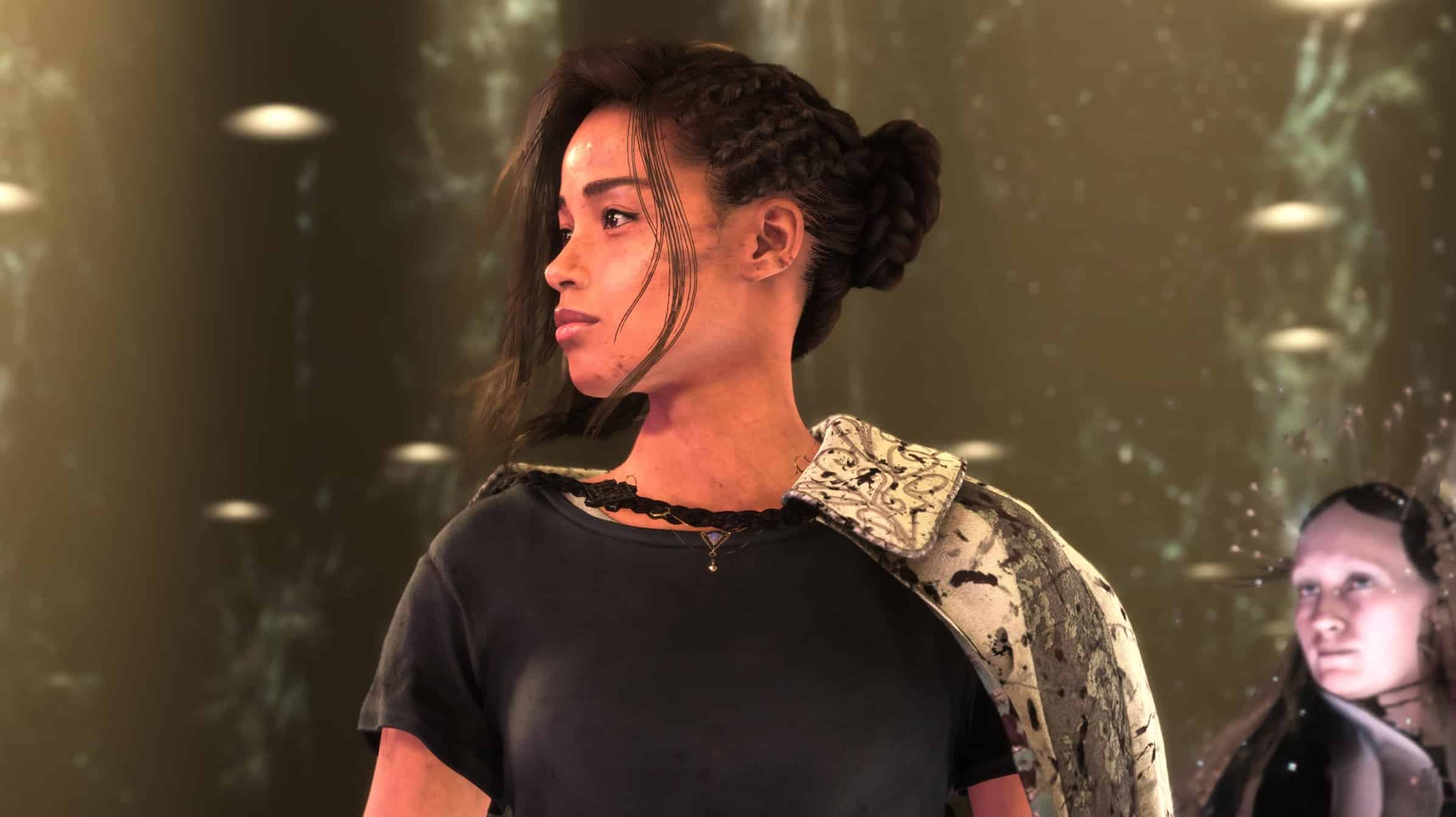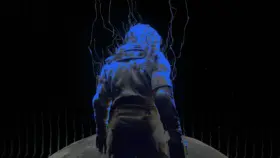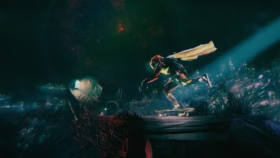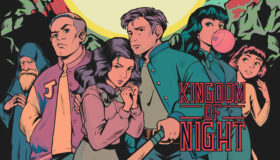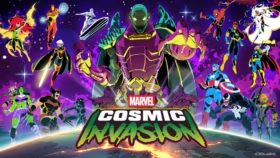Frey Holland is having a strange day. When morning broke, she was in court arguing about her future potential, and the grim circumstances of her life. By afternoon, she was in a strange fantasy land filled with dragons, talking wrist cuffs, and magic powers. Her reaction, understandably, is one of complete shock. ‘I’m somewhere that’s not what I would call Earth, I’m seeing freakin’ dragons, and oh yeah, I’m talking to a cuff!’ she says, in one scene that’s gone inexplicably viral for being ‘cringe’.
It’s a very human moment in otherworldly circumstances – a slice of dialogue that feels out of place as Frey travels through a light-dappled castle, and gazes out onto a beautiful, crystalline forest. But that’s the point. A staple of the isekai, fish-out-of-water genre is displacement, a merging of cultures from alternate worlds.
Frey’s dialogue, out of context – in a trailer, for example – feels over-the-top. Within the actual world of Forspoken, it’s an essential window into a complex, intriguing character.
As a young woman with little stability and a thrumming anger at her circumstances, Frey tends to lash out in bold quips and declarations, reassuring herself, and providing a prickly defence to those around her. While this anger is occasionally overblown and overwritten, its white-hot drive helps to shape the world of Forspoken, and Frey’s overarching journey as a hero.
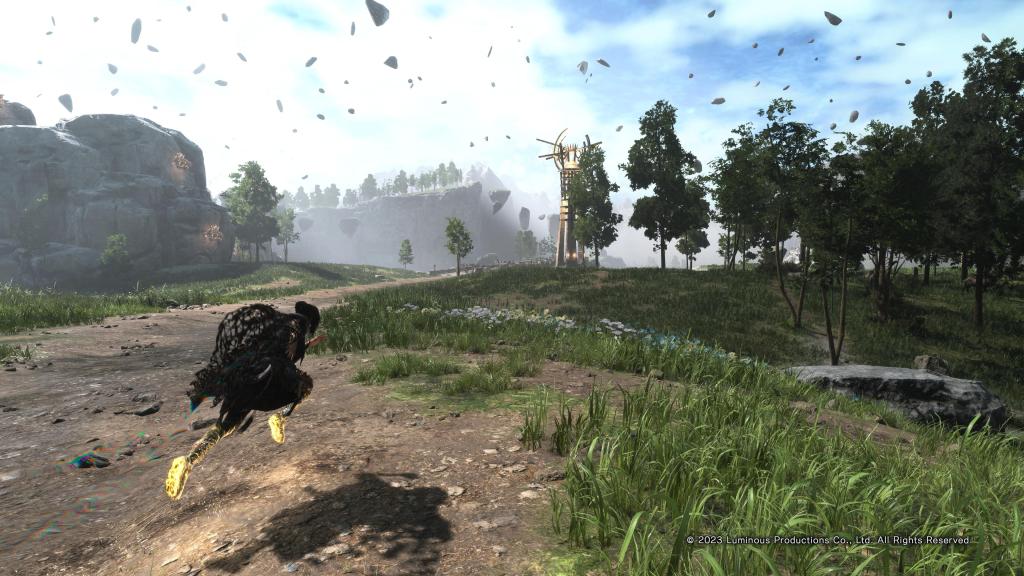
From the moment Frey enters the magical world of Athia, she’s swept into a blisteringly-paced story that thrusts her into an unenviable position: saviour of a land she’s never known. Growing up in foster homes and with a disregard for wider society, this creates a real sense of conflict – one that plays out in each story beat and snappy bit of dialogue.
From the kindly Auden to the brash Johedy, Frey soon discovers something she’s never had: a found family worth protecting. While these relationships ebb and flow, with one particularly grating cutscene threatening to derail Frey’s character development entirely, they play an essential part in the journey as danger advances.
Open fields and open hearts
Frey’s growth plays out in a sweeping arc that encompasses the entire story of Forspoken, bringing players from imposing castles and townships to open plains and fields filled with gorgeous skies, floating fortresses, and twinkling lights.
While the overworld of Forspoken is technically a poisonous landscape infected by dangerous magic, it’s also extremely beautiful, and appears to push the limits of what modern consoles are technically capable of (the PS5 version of the game was provided for review).
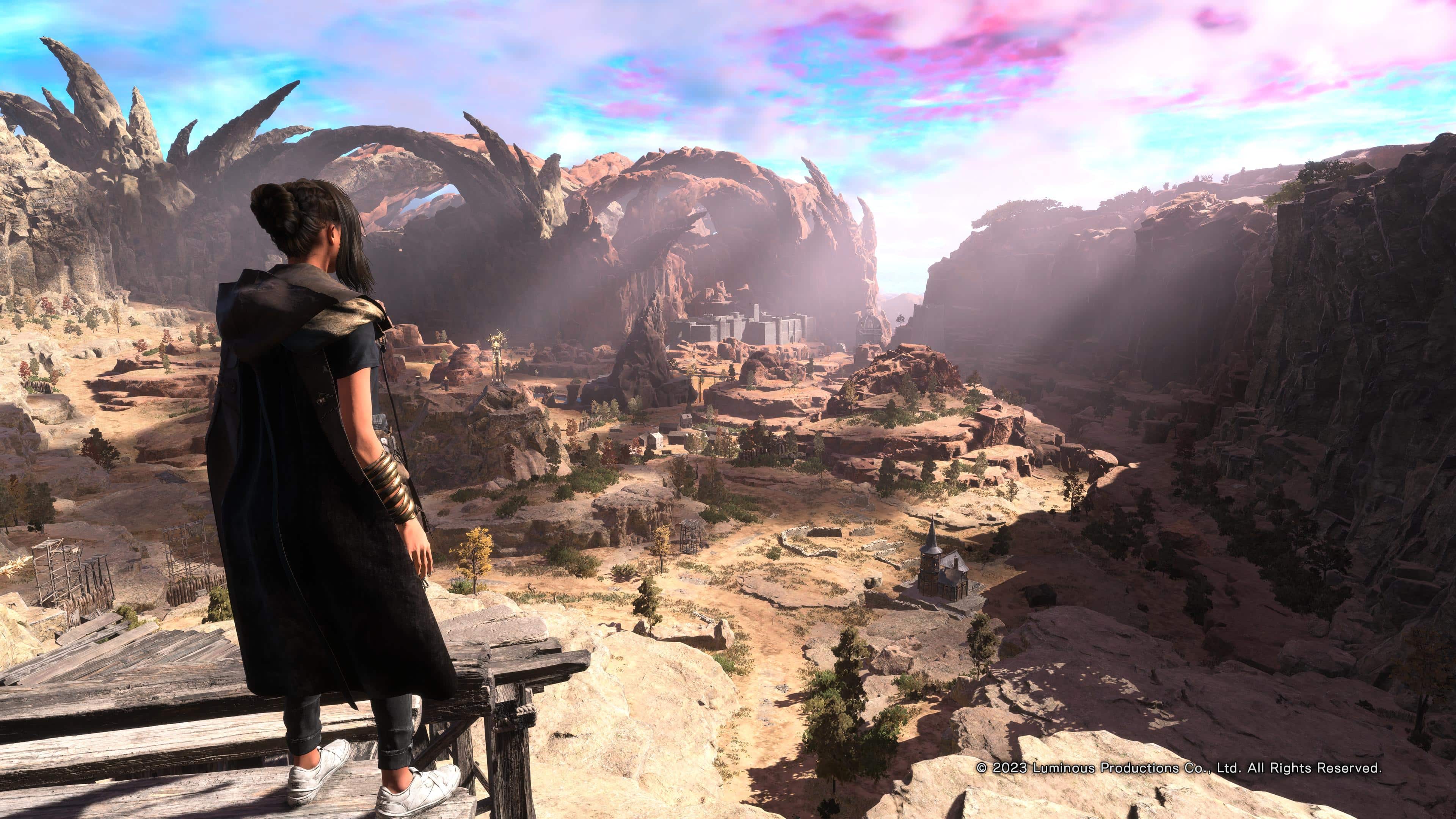
The outer landscapes of Athia are diverse, and sparkle with life – there are dense trees, purple forests, red lava pits, sandy oases, flowing oceans, and yet more sights to behold. Importantly, you can always see far across the glittering worlds ahead of you, the horizon inviting you with promise.
While they are populated by roaming monsters, twisted and warped by magic, these realms are real marvels, and make exploration in Forspoken incredibly eye-catching. They also serve as a backdrop to mastering the game’s intricate and satisfying combat system.
Frey has access to a variety of magics in her journey, thanks to the magic of Cuff, and the corrupted evil of the ‘Tanta’ witches. Much of this magic is ranged, and allows you to parkour-attack your way through enemy hordes, but there’s also a close combat magic set, and a range of other hyper-powered abilities to learn.
Each has a welcome flow, and feels meaty. Spells hit hard, and the PS5 DualSense controller reacts well to these attacks, providing highly tactile responses. While ranged combat can typically be difficult to truly communicate a real impact to the player, Forspoken strikes a perfect balance here, allowing you to achieve a satisfying flow with every zap.
Time your attacks and counter-attacks well, and you’ll contribute to a dramatic, high-powered dance that grows more complex as you encounter new bosses and enemy types. The further you travel into Athia, the more of these threats you’ll uncover.
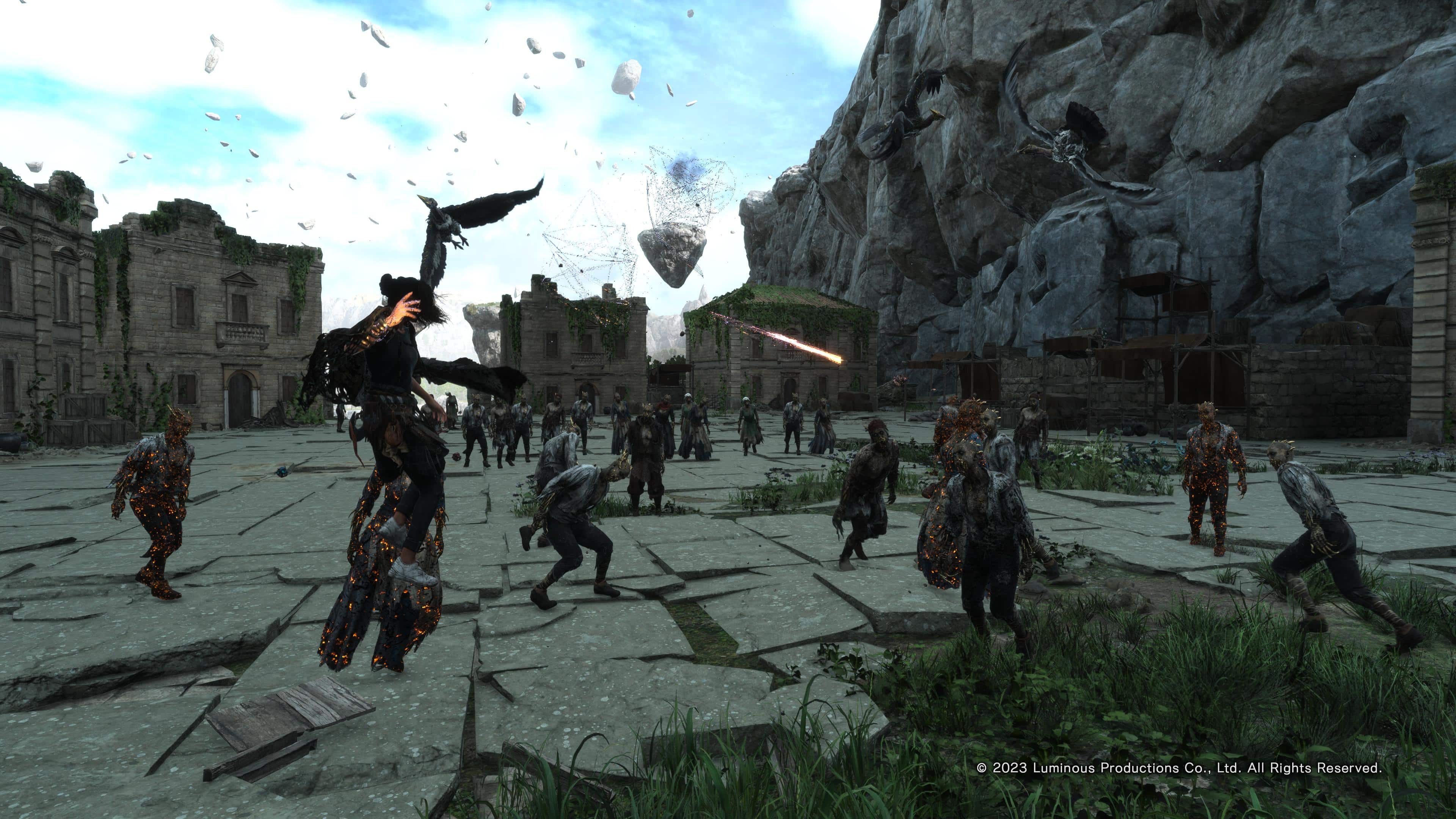
The only real shame, then, is that you spend so little time really getting to explore these realms to their fullest potential.
As mentioned, the pace of Forspoken is impressively fast, with the entire journey taking around 12-15 hours. In this time, you get to know Frey, she gets to know Athia, and multiple dangling story threads loosen and unravel.
You can certainly spend more time stopping to smell the Athian roses, but each plot tends to come with hooks – the world is in danger, the people of Cipal need help, the orphan children of the city demand your attention – that keep you running towards the next goal.
Spending time in the world also feels fairly fruitless at times, with only minor upgrades available in the darker corners of the map. If you spend time levelling up, you can gain an advantage in battle that’ll serve you well, particularly in the final stages of the adventure – but Frey’s combat abilities are already so strong in Normal difficulty that levelling doesn’t feel extremely necessary as you follow the main plot.
A new cloak or necklace may provide additional health benefits, or a new nail set may give you special powers. Upgrades can be found along your path, and each yields additional strength, magic power, and a range of skill boosts. Of course, you can also do away with these extra challenges, and thereby skip the vast majority of the game’s open world.
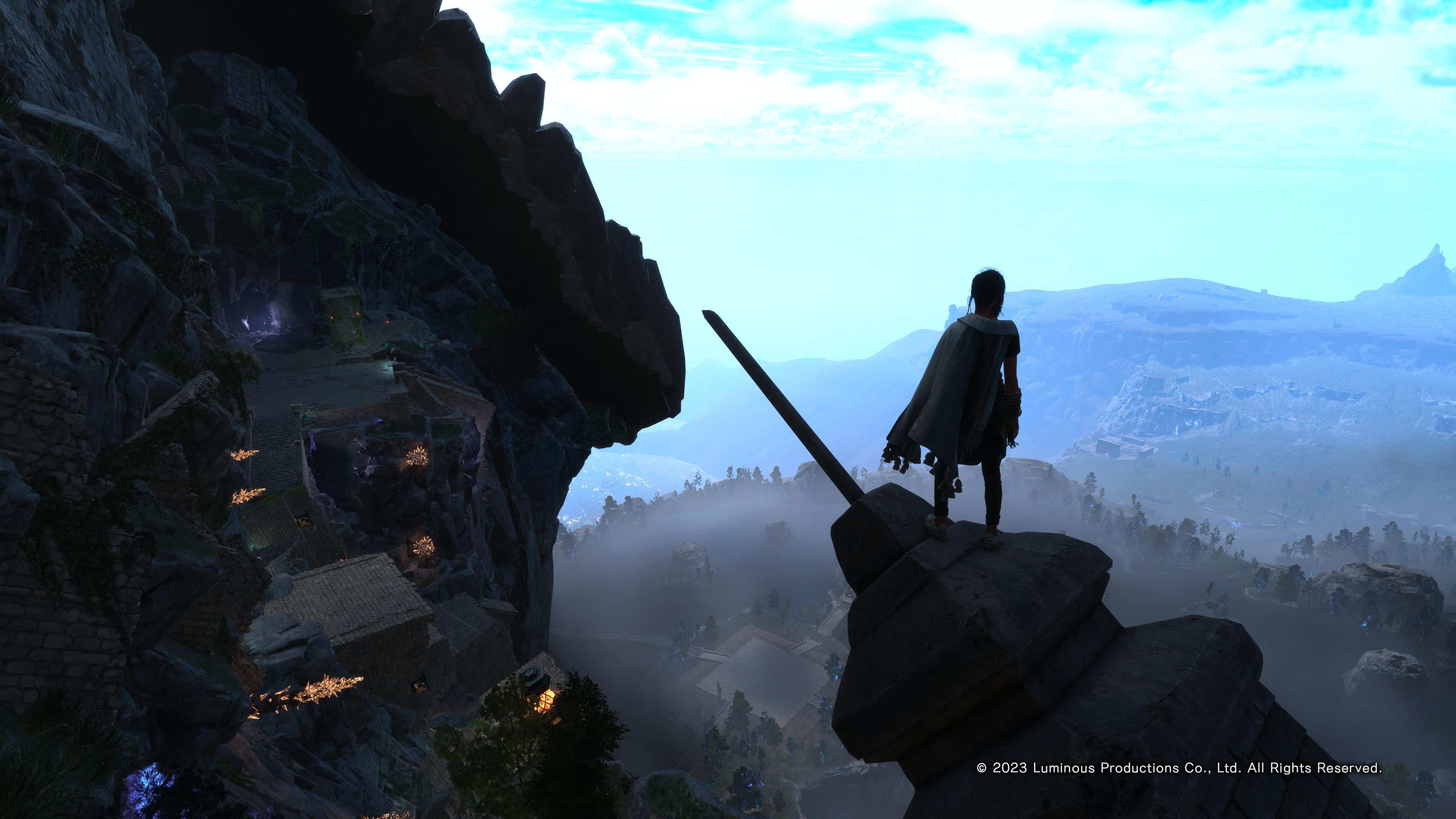
Structure and story pace
Forspoken remains a gripping tale throughout Frey’s journey, but there are gaping cracks in the adventure’s foundation that hold it back from complete brilliance. Its open world is, strangely, one of these cracks.
While gorgeous in nature, Forspoken‘s open world often feels superfluous to the narrative-based story. It’s simply a path to travel through, practice your skills, run into secrets, and level up. There are no major quests out in the deep – only more enemies to take on in endless battles.
The game itself seems structured around this fact, too, with story missions simply popping a point on the map for Frey to travel towards, and another point, once she reaches her goal. This, coupled with frequent cutscenes that seem to prefer guided storytelling over player-led exploration, makes Forspoken feel cloistered at times.
Not every game needs to be open world, and Forspoken is a good example of why – with exploration segments often feeling like filler for a genuinely enthralling, constantly twisting tale.
Frey remains the beating heart
Despite these woes, the heart in the centre of Forspoken shines through.
Frey is a very human protagonist – one rarely seen in games – and while the action can be overwritten and overly dramatic, leaving some scenes feeling silly rather than poignant, she remains an impactful protagonist. You want to see her succeed, to embrace Athia, and to shed her insecurities.
Her story and journey wobbles in places, but it’s redeemed in the game’s epic closing arcs, which reveal Frey’s true nature. Rough and ready, just like Frey, Forspoken is a tale worth stomping through one high-stakes, magic-infused battle at a time.
4 Stars: ★★★★
Forspoken
Platforms: PlayStation 5, PC
Developer: Luminous Productions
Publisher: Square Enix
Release Date: 24 January 2023
The PlayStation 5 version of Forspoken was provided and played for the purposes of this review. GamesHub has affiliate partnerships. These do not influence editorial content. GamesHub may earn a small percentage of commission for products purchased via affiliate links.
